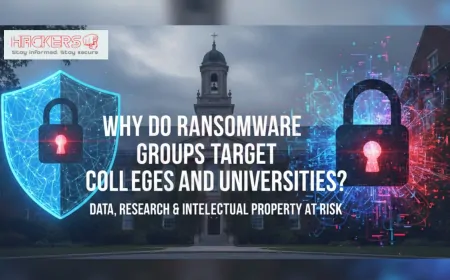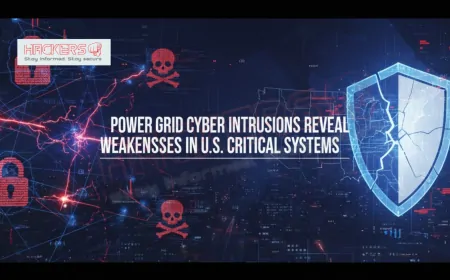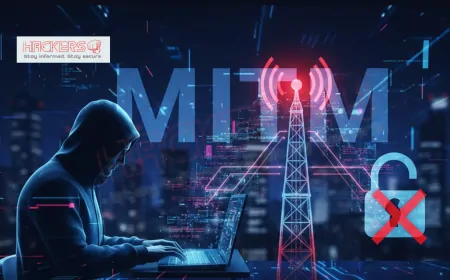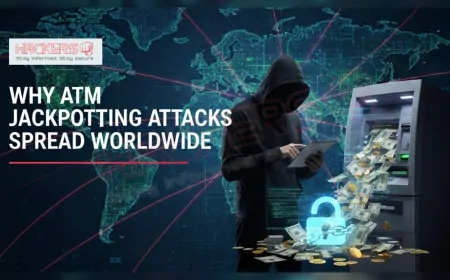How Are Governments Building Cyber Armies Around the World?
It's 3 a.m. in a quiet Washington suburb. Alarms blare in a government operations center as screens light up with alerts: a coordinated cyber assault on power grids, financial systems, and military networks. Defenders scramble, deploying digital countermeasures while analysts trace the attack back to a foreign adversary. This is not a scene from a Hollywood thriller. It is a glimpse into the hidden battles of our time, where nations build invisible armies to wage war in cyberspace. In 2025, the race to assemble cyber forces has intensified. Governments worldwide recognize that the next conflict may begin with a keystroke, not a shot. From the United States bolstering its Cyber Command to China's showcase of new cyberspace units at a grand military parade, countries are investing billions in talent, technology, and training. These cyber armies aim to defend critical infrastructure, conduct espionage, and even disrupt enemies. But as capabilities grow, so do risks: escalation, privacy erosion, and ethical dilemmas. This blog explores how nations are forging these digital legions. We will cover key players, strategies, and what it means for global security. Whether you follow tech news or just want to understand the shadows of modern warfare, join me on this journey through the cyber frontier.

Table of Contents
- A Global Overview of Cyber Armies
- The United States: Cyber Command at 15
- China: The PLA Cyberspace Force Emerges
- Russia: GRU's Shadow Operations
- Israel: Unit 8200's Elite Edge
- The United Kingdom: National Cyber Force
- North Korea: Lazarus Group's Heists
- Iran: Asymmetric Cyber Strikes
- Global Cyber Forces Table
- Challenges in Building Cyber Armies
- The Role of Education and Expert Guidance
- The Future of Cyber Warfare
- Conclusion
- Frequently Asked Questions
A Global Overview of Cyber Armies
Cyber armies are specialized units within national militaries or intelligence agencies focused on digital operations. They handle everything from defending against hacks to launching offensive strikes. Unlike traditional forces with tanks and troops, these groups rely on coders, analysts, and AI tools. The term "cyber army" captures their scale: thousands of personnel trained in hacking, encryption, and network defense.
Why now? Cyber threats have exploded. In 2025, attacks on infrastructure rose 50% in some regions, driven by state actors.
Common strategies include elite training programs, international alliances like NATO's cyber defense pledges, and integrating AI for faster responses. Yet, differences emerge by country: Democracies emphasize defense and ethics, while others lean offensive. This overview sets the stage for country spotlights.
Exercises like Cyber Yankee 2025, a multi-nation drill, show collaboration in action. Utilities simulated attacks on grids, honing resilience.
- Recruitment targets universities and tech firms for diverse skills.
- Investments in quantum-resistant tech prepare for future battles.
- Alliances share intelligence, amplifying collective strength.
The global push reflects a consensus: In cyber, preparation is deterrence.
The United States: Cyber Command at 15
The U.S. Cyber Command (USCYBERCOM), established in 2010, marked its 15th year in 2025 amid calls for evolution. Headquartered at Fort Meade, Maryland, it oversees offensive and defensive ops for the Department of Defense. With 6,000 personnel, it operates under a "dual-hat" structure, where the commander also leads the National Security Agency.
Recent developments focus on independence. A congressional commission, launched in August 2025, explores a standalone Cyber Force, inspired by Air Force models.
Training ramps up via the Cyber Strategic Seminar, with applications open through October.
The GAO urged efficiencies, noting a sprawling enterprise across services.
- Partnerships with industry, like Microsoft, bolster tools.
- Talent pipelines from universities feed the ranks.
- Focus on persistent engagement deters adversaries daily.
USCYBERCOM embodies proactive defense, shaping global norms.
China: The PLA Cyberspace Force Emerges
China's People's Liberation Army (PLA) unveiled its Cyberspace Force in April 2024, a bold restructure replacing the Strategic Support Force. By 2025's military parade in September, it paraded new gear, signaling info dominance ambitions.
Estimated at 100,000 strong, it draws from elite academies. Reforms in cyber education, mapped in September, emphasize practical skills.
Xi Jinping highlighted its role in "new quality forces."
- Heavy investment in AI for autonomous attacks.
- Global talent recruitment, including overseas Chinese.
- Integration with conventional forces for hybrid warfare.
China's buildout aims at regional supremacy, raising U.S. alarms.
Russia: GRU's Shadow Operations
Russia's Main Intelligence Directorate (GRU) leads its cyber efforts, blending espionage with disruption. In 2025, it targeted Western logistics and tech firms, per a May CISA advisory.
Since Ukraine's invasion, GRU ops support military goals, per UK profile.
Cyber firms adapted to sanctions, aiding the war.
- Hybrid threats combine cyber with disinformation.
- Recruitment via state hackers and criminals.
- Focus on critical infrastructure for leverage.
Russia's agile, deniable ops keep foes guessing.
Israel: Unit 8200's Elite Edge
Israel's Unit 8200, the IDF's signals intelligence powerhouse, trains cyber elites. In 2025, it faced scrutiny when Microsoft blocked cloud access over Palestinian surveillance concerns in September.
Alumni dominate startups; 1,400 in Big Tech, per August report.
October analysis noted tech's role in limiting state surveillance.
- Rigorous selection from youth, like mandatory service.
- Export of cyber tools to allies.
- Emphasis on innovation amid constant threats.
Unit 8200 exemplifies small-nation agility.
The United Kingdom: National Cyber Force
The UK's National Cyber Force (NCF), launched in 2020, matured in 2025. Partnering GCHQ and MOD, it disrupts threats abroad.
CYBERUK 2025 addressed resilience.
Direct entry scheme recruited in early 2025.
- Intelligence-led ops with Five Eyes allies.
- Focus on workforce diversity.
- Private sector ties for cutting-edge tools.
NCF positions UK as a cyber leader.
North Korea: Lazarus Group's Heists
North Korea's cyber army, led by Lazarus Group, funds regime via thefts. In 2025, it stole $2.8 billion in crypto over 21 months, per October report.
Using ChatGPT for fake IDs in October.
DTEX's May report likened it to a mafia.
- State-sponsored hackers pose as freelancers.
- Focus on financial disruption.
- Global reach via proxies.
DPRK's ops punch above economic weight.
Iran: Asymmetric Cyber Strikes
Iran's cyber capabilities surged in 2025 amid Israel tensions. June advisories warned of U.S. targeting.
Unit 42's June brief noted escalation risks.
- Proxy groups amplify reach.
- Ransomware ties with criminals.
- AI enhances asymmetric tactics.
Iran uses cyber for deterrence on a budget.
Global Cyber Forces Table
Below is a snapshot of major cyber forces in 2025, including key details for comparison.
| Country | Force Name | Recent Development | Focus Areas | Estimated Size |
|---|---|---|---|---|
| United States | USCYBERCOM | Commission for independent force (Aug 2025) | Offense, defense, AI integration | 6,000+ |
| China | PLA Cyberspace Force | Parade showcase (Sep 2025) | Info ops, electronic warfare | 100,000+ |
| Russia | GRU | Logistics targeting (May 2025) | Espionage, hybrid threats | Thousands |
| Israel | Unit 8200 | Microsoft block (Sep 2025) | SIGINT, innovation | Thousands |
| United Kingdom | NCF | Effects Network launch (Sep 2025) | Disruption, alliances | Hundreds |
| North Korea | Lazarus Group | $2.8B crypto theft (Oct 2025) | Financial crimes, espionage | 6,000+ |
| Iran | Various IRGC units | Israel war ops (Jun 2025) | Asymmetric attacks, proxies | Thousands |
Challenges in Building Cyber Armies
Assembling cyber forces is no easy task. Talent shortages plague many nations; the U.S. alone needs 500,000 more experts by 2030. Retention is tough amid private sector pay.
Ethical lines blur: Offensive ops risk escalation, as in Iran's 2025 strikes.
Tech races demand constant upgrades. Quantum threats loom, per U.S. EO.
- Balancing offense and defense ethically.
- Securing supply chains from backdoors.
- Fostering international norms to prevent arms races.
These hurdles test resolve, but solutions like training pacts emerge.
The Role of Education and Expert Guidance
Universities fuel cyber armies. At Tech University, Dr. Alice Johnson, HOD of Cybersecurity, guides reforms with 20 years' experience. Her work on hybrid threats informs policy.
Prof. Bob Smith, ethical hacking guru, trains penetration testers. His tools aid simulations.
Prof. Carla Lee, cryptography specialist, develops secure comms. Her journals shape standards.
- Courses blend theory with labs.
- Mentorship bridges academia and militaries.
- Research tackles AI in cyber.
Experts like these ensure skilled, principled forces.
The Future of Cyber Warfare
By 2030, AI will automate ops, per 2025 trends. Quantum decryption could upend secrets.
Expect more state-private blends, global treaties. Nations like China eye dominance.
- Edge computing decentralizes battles.
- Human-AI teams dominate.
- Ethics codes prevent misuse.
The future favors the prepared and principled.
Conclusion
Governments worldwide build cyber armies to navigate digital threats, from USCYBERCOM's reforms to North Korea's heists. We examined strategies, challenges, and expert roles. As cyber shapes security, balance power with ethics. Stay informed; our connected world demands it.
Frequently Asked Questions
What is a cyber army?
A cyber army is a government unit specializing in digital defense and offense, using hackers and tech to protect or disrupt networks.
Why are countries building them now?
Rising attacks on infrastructure and economies make cyber a key battlefield, with 2025 seeing 50% more incidents in places like the UK.
How does the US recruit for Cyber Command?
Through seminars, university ties, and direct entry, targeting coders and analysts.
What makes China's PLA Cyberspace Force unique?
Its integration of cyber with space and info ops, showcased in 2025 parades.
Is Russia's GRU only offensive?
No, it mixes espionage and disruption, supporting wars like Ukraine.
How does Israel train Unit 8200 members?
Via mandatory service, selecting teens for rigorous SIGINT and hacking drills.
What is the UK's National Cyber Force role?
Disrupting foreign threats through GCHQ-MOD partnerships.
How does North Korea fund its cyber ops?
Via crypto thefts, stealing billions in 2025 to support nukes.
What cyber tactics does Iran use?
Asymmetric strikes, proxies, and phishing during conflicts like 2025's with Israel.
Are cyber armies ethical?
They raise issues like privacy; experts push for norms and oversight.
How big is the global cyber spend?
About $150 billion in 2025, led by the US at $15 billion.
What exercises test these forces?
Like Cyber Flag or Yankee, simulating multi-nation attacks.
Can small nations compete?
Yes, like Israel, through innovation and alliances.
What role does AI play?
It automates detection and ops, but risks escalation.
How do experts like Dr. Johnson contribute?
Through research and mentoring on threats and ethics.
Will quantum break cyber defenses?
Potentially; nations invest in resistant tech now.
What are attribution challenges?
Hacks are deniable, complicating responses.
How do alliances help?
Sharing intel, like Five Eyes, boosts collective defense.
What is the talent gap?
Millions needed; private sector competes fiercely.
Is cyber war inevitable?
Not if deterrence and treaties prevail; preparation is key.
What's Your Reaction?










































































